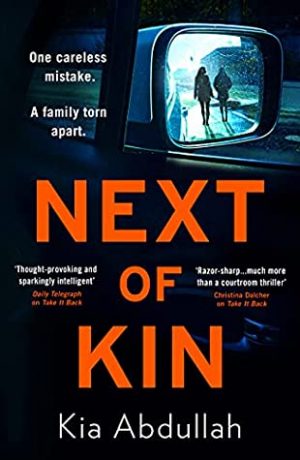
Today’s post is by editor Tiffany Yates Martin (@FoxPrintEd).
Every story is a mystery, the reader seduced by that inexorable pull to know what happens next, and why.
It’s the author’s job to create questions that readers crave the answers to. The more you can delay gratification, the greater the arousal of reader’s desire to know.
At least in theory.
This facet of human nature—our insatiable curiosity—explains the appeal of using secrets, twists, and reveals in stories to arouse it.
And yet if not well constructed, these devices can leave readers with so many questions they disengage. Or the reveal might feel anticlimactic.
Writers must maintain a precarious balance between giving too much information and not enough—between boredom and frustration. But writers also have to entice readers into caring about the unknowns, or even the most shocking reveal will feel hollow.
Let’s examine the most common reasons reveals fail, and how to address them.
Problem: We don’t know enough.
You know that friend you have (that all of us have), who courts attention by dropping juicy little hints? “Something really big is in the works—but I can’t talk about it yet.” “Oh, believe me, I could tell you some stories about that….” “Wait till you find out about ________.”
Our curiosity might be mildly sparked but we don’t have enough information, so these coy little hints fall flat and we’re likely to feel manipulated and annoyed. That’s how readers feel when an author drops vague hints at some dramatic unknown. In writing it may look like this:
The man in front of her turned to speak to his companion, and her stomach dropped in recognition. How could it be him, after all these years? After everything that happened, how could he dare to show his face in this town? Please don’t turn around, she thought, even as part of her wanted him to, so she could confront him.
Goodness, something exciting is surely going on here, isn’t it?
Or is it? We don’t know, actually. The character seems to feel that way, but readers have to take it on faith because we don’t have enough context to understand what’s happening.
Solution: Ground readers with enough detail to plant their feet in the story, characters, and situation. Instead of “everything that happened,” what if you added a specific detail, like “after he left her standing at the altar at the church around the corner…”
Problem: We know too much.
This issue is like your behind-the-curve friend—the one who may think he’s dropping some shocking intel, but his listeners are already two steps ahead. The result: anticlimax, and a bored audience. It’s the book or movie you put down or stop watching because it feels too predictable; the one that leaves you dissatisfied and feeling cheated because it happened exactly as you expected—the author didn’t surprise and delight.
Solution: Find and address where you’ve telegraphed or tipped your hand and pointed too clearly to what you’re trying to conceal; misdirect the reader.
Problem: We don’t care about the character.
Another friend tells stories and drops tidbits of gossip about folks in his orbit, hoping to hook his audience with the mystery. But if we don’t know or care about these people, then we don’t care about their secrets either. It’s not driving us mad to know the answers—but sure, fine, we’ll smile and nod politely.
Investing readers in your characters is the single most important work of storytelling: They are the vehicle in which we ride into the story, the lens through which we experience it. If we aren’t invested in your characters, it’s hard to invest in what happens to them—including what unknowns may await and impact them.
Solution: Make sure readers have reasons to care about what your characters experience, what they want, and what drives them.
Problem: Stakes are unclear.
This is the friend who drops bombs with great fanfare, but without context. “I walked around the corner and you’ll never guess who I ran smack into—my old boss!”
If we don’t know why the event or information matters, then these are just facts, neutral and unaffecting.
With reveals in story, it may look like this:
She’d known someone was watching her every move, but everyone said it was all in her head, she was just fanning up drama. But there—the steps behind her were quickening along with her heartbeat as she increased her pace, and no one could deny now that she was being followed.
She was tired of running, tired of being scared. Facing whoever it was couldn’t be any worse than the terror she’d lived under for weeks. She stopped, whirled around—and there he was.
Her uncle. Alive.
This could be a shocking and effective reveal if readers know why the uncle matters, and what it means to her that he’s alive and stalking her.
This is tied in with offering enough context, but more than that, we have to know why that context is relevant to the character—meaning what’s at stake for her. An uncle returning from the dead is a bit unusual, to be sure—but to yield the impact the author seems to want, readers have to know more: What does it mean to the protagonist that he’s alive? Was he a threat she thought long past? A beloved mentor whose loss has gutted her in the story? The benefactor whose inheritance she’s using for a driving purpose of her own, whose return threatens that goal?
When finally pulling back the curtain, authors need to lay enough groundwork for readers to understand the impact the discovery will have on the character.
Solution: Show readers why it matters: Pave sufficient context into the story leading up to the reveal so we can understand what effect it has on the character and what she wants, or offer it immediately afterward to answer our questions.
Diagnosing ineffective reveals
It’s easy to be blind to the weaknesses in your story, and how effective your reveals are. If you’re having trouble, this is where beta readers or critique partners can be invaluable. After their read, ask specific questions about how hooked they felt, whether they were surprised by the reveals, and whether the payoffs felt satisfying.
If your reveals aren’t quite holding together, ask for specifics: Where did your readers figure it out ahead of time, and how? Or where and why did they feel confused or uninvested? What was it exactly about the reveal that didn’t have the impact you intended? Encourage frank feedback—this isn’t the time for kind soft-pedaling.
Once you know what’s not working, you can diagnose the cause from a storytelling perspective using the above pitfalls as a guide.

Tiffany Yates Martin has spent nearly thirty years as an editor in the publishing industry, working with major publishers and New York Times, Washington Post, Wall Street Journal, and USA Today bestselling and award-winning authors as well as indie and newer writers. She is the founder of FoxPrint Editorial and author of the bestseller Intuitive Editing: A Creative and Practical Guide to Revising Your Writing. She is a regular contributor to writers’ outlets like Writer’s Digest, Jane Friedman, and Writer Unboxed, and a frequent presenter and keynote speaker for writers’ organizations around the country. Under her pen name, Phoebe Fox, she is the author of six novels. Visit her at www.foxprinteditorial.com.






